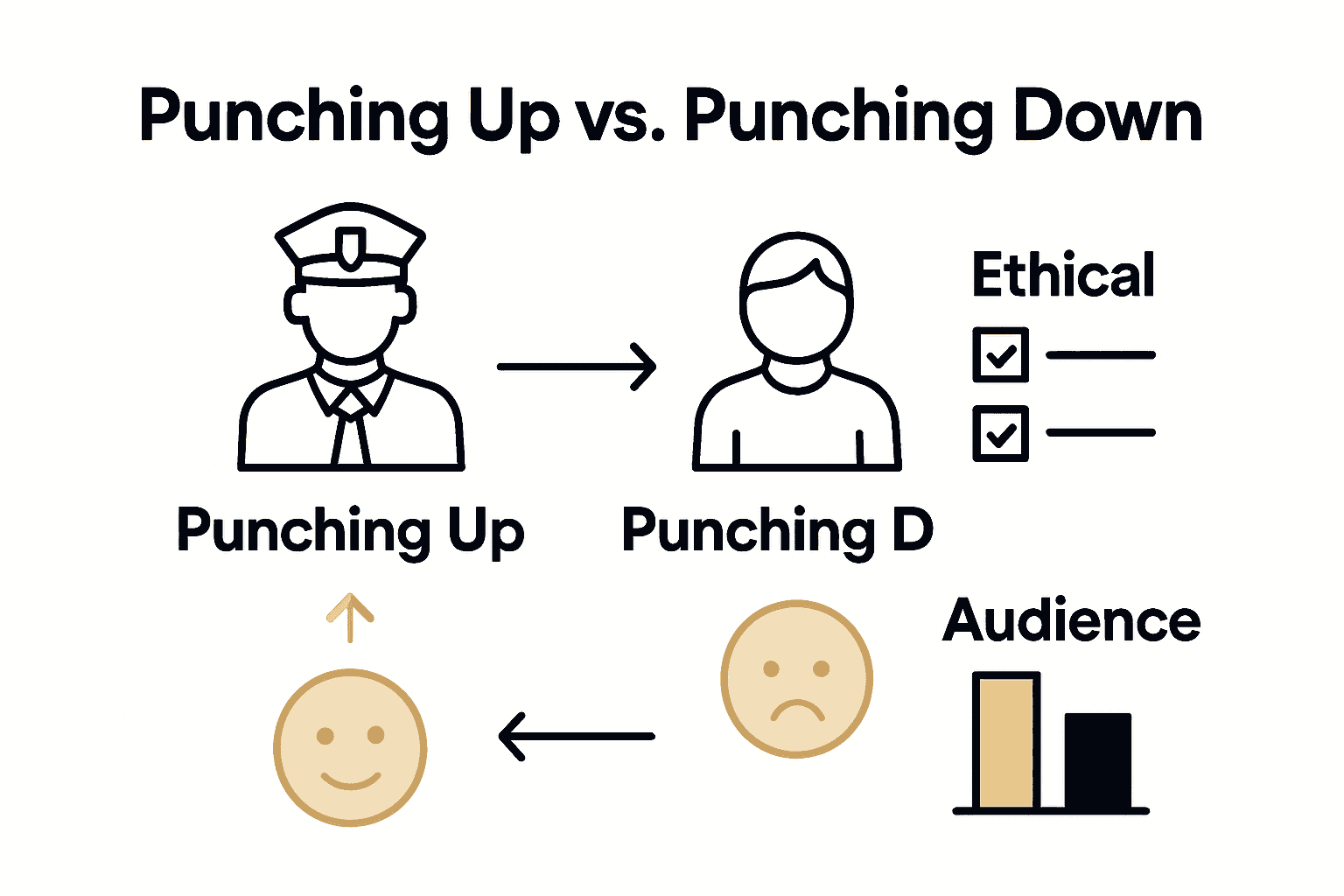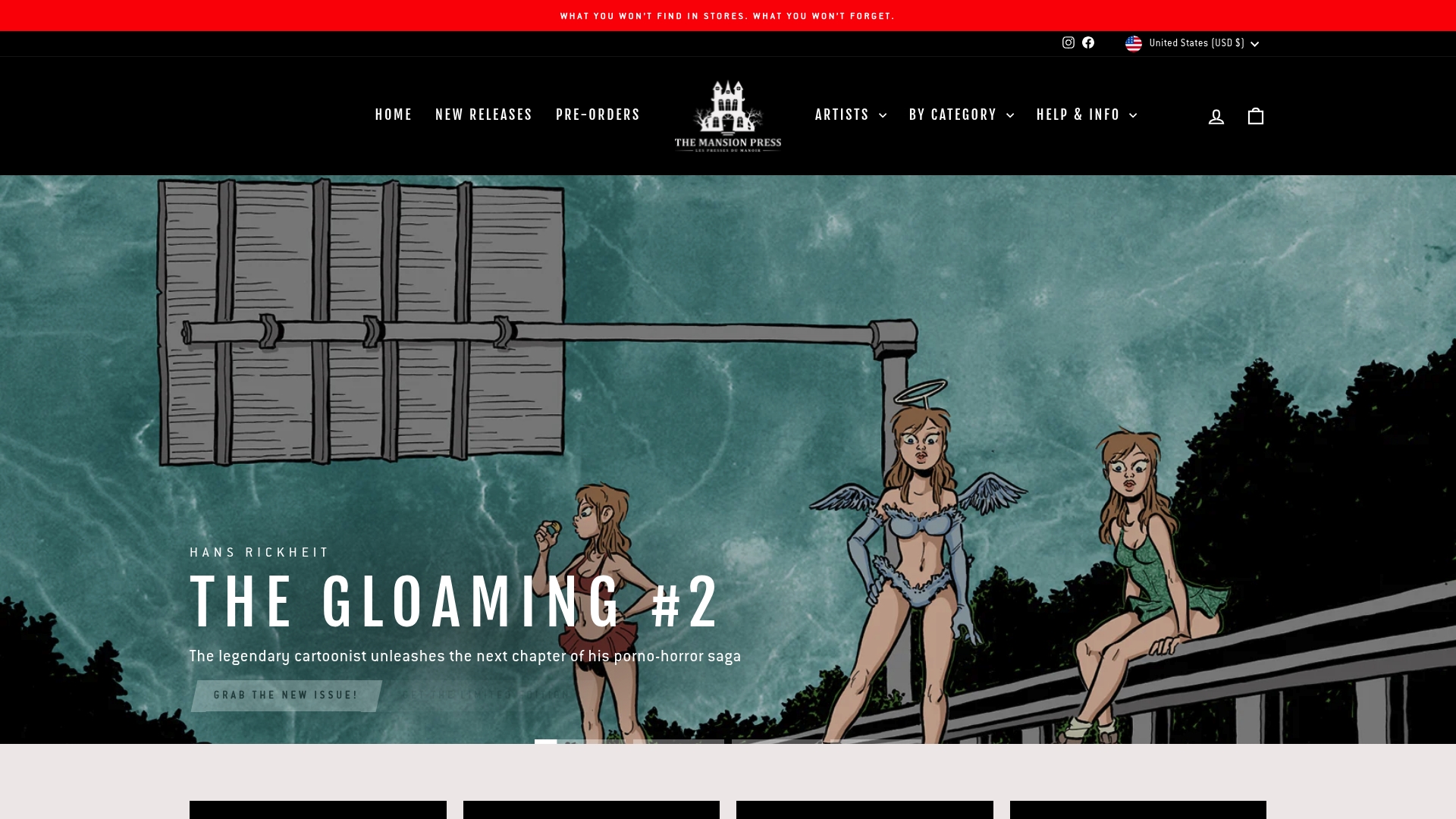Dark Humor in Graphic Novels: Complete Guide
More than half of readers say they are drawn to graphic novels that tackle serious issues with humor, even when the subjects are uncomfortable or taboo. Dark humor in graphic novels stands out for its ability to turn tragedy and social dysfunction into sharp, memorable art. Whether exploring death, absurdity, or injustice, these works invite readers to reflect, laugh, and rethink what comics can express.
Table of Contents
- Defining Dark Humor In Graphic Novels
- Major Styles And Subgenres Explained
- Visual And Narrative Techniques Used
- Cultural Impact And Audience Reception
- Ethical Issues And Creative Challenges
Key Takeaways
| Point | Details |
|---|---|
| Dark Humor’s Role | Serves as a complex narrative technique that transforms uncomfortable subjects into artistic commentary. |
| Key Characteristics | Includes subversion of narrative expectations and multilayered storytelling that elicits both laughter and discomfort. |
| Subgenres | Comprises various styles such as satirical deconstruction and existential dark comedy, each offering unique societal critiques. |
| Ethical Considerations | Creators must navigate sensitive topics carefully to balance artistic expression with audience impact and emotional safety. |
Defining Dark Humor in Graphic Novels
Dark humor in graphic novels represents a complex narrative approach that transforms uncomfortable, taboo, or tragic subjects into provocative artistic commentary. Emerging from a rich tradition of satirical storytelling, this genre uses comedic techniques to explore deeply serious themes like mortality, social dysfunction, and human suffering University of North Texas Digital Library.
According to scholarly research on dark humor, this narrative style involves comedic treatment of subjects typically considered inappropriate or painful, such as death, violence, and bodily functions Cambridge University. In graphic novels, this manifests through visual and textual strategies that deliberately challenge reader expectations and emotional responses. Artists leverage irony, absurdist representations, and stark visual metaphors to transform potentially traumatic experiences into moments of critical reflection.
The philosophical underpinnings of dark humor in graphic novels extend beyond mere shock value. It serves as a sophisticated mechanism for social critique, allowing creators to dissect complex societal issues through a lens of sardonic wit. By presenting difficult narratives with unexpected comedic elements, graphic novelists can engage readers in deeper conversations about systemic problems, human psychology, and the inherent contradictions of existence.
Key characteristics of dark humor in graphic novels include:
- Subversion of traditional narrative expectations
- Intentional disruption of emotional comfort zones
- Use of exaggerated or grotesque visual representations
- Multilayered storytelling that simultaneously provokes laughter and discomfort
For readers interested in exploring this fascinating narrative technique further, our understanding dark graphic novels guide offers comprehensive insights into the artistic strategies employed by contemporary graphic novelists.
Major Styles and Subgenres Explained
Dark humor in graphic novels encompasses several distinctive styles and subgenres that challenge traditional narrative conventions. Menippean satire, a particularly fascinating approach, attacks mental attitudes rather than specific individuals, employing complex narrative techniques that blend allegory, parody, and satirical commentary Wikipedia.
One significant subgenre is the grotesque narrative, which draws inspiration from the Theatre of the Grotesque. This style deliberately uses macabre and inappropriate elements to create emotional detachment, pushing readers beyond conventional storytelling boundaries Wikipedia. Graphic novelists working in this tradition leverage exaggerated visual metaphors and surreal character representations to disrupt audience expectations.
Within dark humor graphic novels, several key subgenres emerge, each offering unique approaches to challenging societal norms:
- Satirical Deconstruction: Systematically dismantling social institutions through ironic visual storytelling
- Absurdist Narrative: Presenting seemingly nonsensical scenarios that reveal profound underlying truths
- Existential Dark Comedy: Exploring human mortality and meaninglessness through sardonic visual metaphors
- Social Critique Comics: Using dark humor to expose systemic inequalities and cultural contradictions
Readers interested in exploring these intricate narrative styles might want to check out our graphic novel genres guide, which offers deeper insights into the complex world of alternative comic storytelling.
Visual and Narrative Techniques Used
Dark humor graphic novels employ sophisticated visual and narrative techniques that transform uncomfortable subjects into provocative artistic experiences. Drawing inspiration from innovative comic traditions, artists leverage complex storytelling methods to challenge reader expectations. Illustrative recontextualization, exemplified by works like Harvey Kurtzman’s groundbreaking ‘Jungle Book’, utilizes exaggerated cartoon styles with fluid brushwork and innovative dialogue techniques to enhance satirical storytelling Wikipedia.
Comic artists specializing in dark humor frequently use visual juxtaposition as a primary narrative strategy. By strategically combining unexpected imagery with sardonic text, they create multilayered comedic experiences that simultaneously entertain and provoke critical thinking. The webcomic ‘Wondermark’ demonstrates this approach brilliantly, recontextualizing historical illustrations to generate humor through unexpected visual and verbal combinations Wikipedia.
Key visual and narrative techniques in dark humor graphic novels include:
- Panel Disruption: Breaking traditional panel structures to create visual cognitive dissonance
- Grotesque Caricature: Exaggerating physical features to highlight psychological distortions
- Ironic Framing: Using seemingly cheerful visual styles to underscore dark narrative themes
- Metanarrative Commentary: Including self-referential elements that critique the storytelling process itself
For graphic novel enthusiasts eager to dive deeper into these intricate storytelling approaches, our narrative techniques in graphic novels guide offers comprehensive insights into the art of visual storytelling.

Cultural Impact and Audience Reception
Dark humor graphic novels have emerged as powerful cultural commentaries, transforming painful social experiences into provocative artistic statements. The genre demonstrates an extraordinary capacity to confront challenging narratives through humor, as exemplified by scholarly analyses of how comedic approaches can reframe complex societal traumas University Press.
Popular comic series like Lenore, the Cute Little Dead Girl illustrate the genre’s unique ability to subvert traditional narrative expectations, reimagining familiar cultural icons through a macabre lens. By reinventing children’s themes and nursery rhymes with dark comedic twists, these graphic novels challenge audience perceptions and create spaces for critical reflection Wikipedia.
Audience reception to dark humor graphic novels typically encompasses several nuanced psychological responses:
- Cognitive Dissonance: Simultaneous experiences of humor and discomfort
- Critical Engagement: Intellectual stimulation through unconventional storytelling
- Emotional Catharsis: Processing complex feelings through satirical representation
- Social Commentary: Recognizing systemic issues through exaggerated narratives
For readers interested in exploring the deeper psychological dimensions of this fascinating genre, our understanding visual narrative guide offers comprehensive insights into the intricate world of graphic storytelling.
Ethical Issues and Creative Challenges
Dark humor graphic novels navigate complex ethical terrain, challenging artists to balance provocative storytelling with sensitive representation. Emerging research explores the nuanced landscape of humor interpretation, with studies demonstrating the intricate cognitive processes involved in understanding complex narrative techniques arXiv.
The creative challenges inherent in dark humor graphic novels extend beyond simple comedic representation. Artists must carefully negotiate the fine line between satirical critique and potential offense, a balance that requires deep understanding of narrative complexity and audience perception. Cutting-edge research into artificial intelligence’s ability to comprehend contradictory narratives highlights the profound sophistication required in crafting these nuanced storytelling approaches arXiv.
Key ethical considerations for dark humor graphic novel creators include:
- Contextual Sensitivity: Understanding cultural and personal trauma boundaries
- Punching Up vs. Down: Ensuring satirical critique targets systemic issues, not marginalized groups
- Intention vs. Impact: Recognizing the potential unintended consequences of provocative imagery
- Psychological Safety: Balancing artistic expression with audience emotional well-being
For creators seeking to navigate these complex creative landscapes, our guide on visual storytelling challenges offers comprehensive insights into responsible artistic expression.

Discover Dark Humor Graphic Novels Like Never Before
If you are fascinated by the unique blend of provocative storytelling and complex visual artistry that defines dark humor in graphic novels you will appreciate our exclusive collection at The Mansion Press. This genre’s power to confront difficult themes with satire and irony requires thoughtful curation of artbooks and comics that truly capture those multilayered narratives. Whether you seek limited-edition works or cutting-edge new releases that push boundaries our platform offers a perfect bridge between independent artists and collectors who share your passion.

Explore original creations that echo the intricate visual techniques and ethical questions discussed in the article. Don’t miss your chance to own distinct pieces that engage with social critique and emotional catharsis. Visit The Mansion Press now and browse our curated selection inspired by the dark humor genre. For deeper insight into comic storytelling styles check out our graphic novel genres guide and learn how narrative complexity adds value to each collectible. Act now to secure rare finds that challenge conventional narratives and enrich your art collection.
Frequently Asked Questions
What is dark humor in graphic novels?
Dark humor in graphic novels refers to a narrative style that tackles uncomfortable, taboo, or tragic subjects, transforming them into provocative artistic commentary through comedic techniques.
What are some characteristics of dark humor in graphic novels?
Key characteristics include subversion of traditional narrative expectations, intentional disruption of emotional comfort zones, exaggerated visual representations, and multilayered storytelling that provokes both laughter and discomfort.
What are the primary visual techniques used in dark humor graphic novels?
Some primary visual techniques include panel disruption, grotesque caricature, ironic framing, and metanarrative commentary that critique the storytelling process itself while adding layers to the narrative.
How do audiences typically respond to dark humor graphic novels?
Audience responses often include cognitive dissonance, critical engagement with the themes, emotional catharsis, and recognition of social commentary regarding systemic issues portrayed in the narratives.
Recommended
- Understanding Dark Graphic Novels Explained – The Mansion Press
- Understanding Exploring Dark Comics Themes for Art Lovers – The Mansion Press
- Graphic Novel Genres Explained: Complete Essential Guide – The Mansion Press
- Understanding Graphic Novel Formats: A Comprehensive Guide – The Mansion Press
- Understanding Hoodie Funny: The Humor in Casual Wear – ChillStitchApparel

